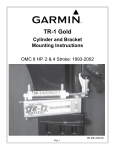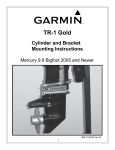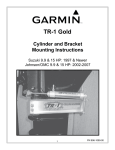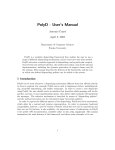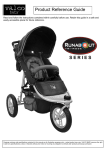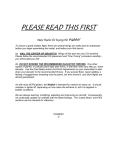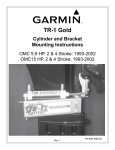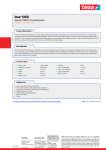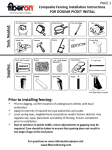Download Marine Technology
Transcript
Marine Technology MONDAY – APRIL 21, 2014 Review – The Sailboat Today at Marine Technology Compression Testing & Other 4 Stroke Considerations – AM PM Sailboat Sails – Quiz AM PM Fuel Ratios – 2 Stroke –Math AM PM Compression Testing AM PM Web Search – Old Outboard Motors In the News Ferry Disaster – Update Missing Jet - Update Boston Strong Corvette Sink Hole - Update Warm-up Question 1 You notice that the ground wire to your gasoline tank has corroded at the connection and as a consequence is barely attached. What should you do? A. Ignore the problem because it does not matter B. Cut back the wire, replace the connector, and reattach C. Inspect and clean ground wire connections at both ends to ensure proper grounding of the tank D. Both B & C Answer – Both B & C Grounded Fuel Tank Warm-up Question 2 Your runabout’s hydraulic steering wheel is making a clicking sound and the outboard does not always move when turning the wheel. What may be a possible reason? A. B. C. D. Answer B The propeller has been dinged Steering has air in the system The outboard is experiencing cavitation None of the above Compression Testing To test compression, bring engine up to normal operating temperature Testing Annually is a great idea so that you can detect early signs of failure Find a potential problem early and save money Example - gummed up piston rings can be readily fixed using a de-carbonizing solvent The service manual will provide the proper specifications for compression Compression Testing - Benchmarks As it is important to be within the manufacturer’s recommendations it is EQUALLY important to establish a benchmark for future diagnostics If there is more than a 15 PSI difference drop from the benchmark – be concerned and proactive Also important is the variation between cylinders Ensure that there is not more than a 15 PSI difference between cylinders The Test Steps for Compression Testing 1. Disable the engine’s ignition system Unplug the gang plug or engine kill switch Ensure that there is no spark at the plugs or wires 2. Remove the engine’s spark plugs Inspect each plug to diagnose possible problems 3. Thread the compression tester into cylinder #1 and zero out the guage 4. Open the engines throttle or fast idle 5. Crank the engine the same number of times for each cylinder you test 6. Record your readings – place in engine’s log book Blow-by and Low Compression Other Considerations Remember that an engine that has been in storage for some time may have relaxed Run engine for several extended periods prior to use If reading is low, squirt some shop oil into suspect cylinder to “Wet Test” If compression improves- rings may be gummed up Us a decarbonizing spray to dissolve the gum and re-test Spray into air intake while engine is running If the “Wet Test” does not improve compression then internal problems are probable Worn rings Worn cylinder lining Worn Rings and Pistons Gap the Spark Plugs & Run Once compression testing is complete Replace the spark plugs with new plugs if necessary If the plugs require GAPPING consult owner’s manual for guage Us a feeler guage to set the proper gap Plug Diagnostics The Compression Test The Compression Test



















